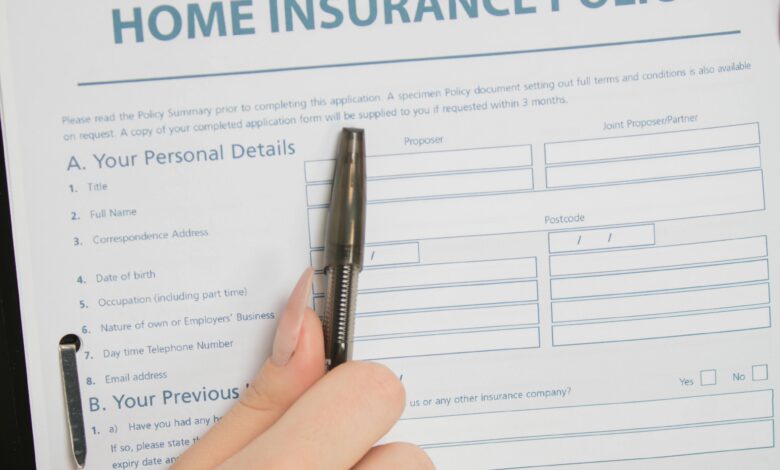Does Home Insurance Cover Natural Disasters in Canada?

Canada is known for its diverse and often extreme weather conditions, ranging from severe snowstorms and floods to wildfires and earthquakes. These natural disasters can cause significant damage to homes and personal property, leaving homeowners wondering whether their home insurance policies will cover the costs of repairs or replacements.
The short answer is: it depends . While standard home insurance policies in Canada provide coverage for many perils, they often exclude certain types of natural disasters unless additional endorsements or separate policies are purchased. In this article, we’ll explore what home insurance typically covers, which natural disasters are included or excluded, and how homeowners can ensure they’re adequately protected.
What Does Standard Home Insurance Cover?
Most standard home insurance policies in Canada include coverage for:
- Dwelling Protection: Repairs or rebuilding of the physical structure of your home.
- Personal Property Coverage: Replacement or repair of belongings damaged or destroyed by insured perils.
- Liability Protection: Legal and medical expenses if someone is injured on your property or you accidentally cause damage to others.
- Additional Living Expenses (ALE): Temporary housing and living costs if your home becomes uninhabitable due to a covered loss.
However, these policies usually only cover named perils , such as fire, theft, vandalism, and windstorms. Some policies offer all-perils coverage , which provides broader protection but still excludes specific risks like floods and earthquakes unless explicitly added.
Which Natural Disasters Are Typically Covered?
1. Windstorms and Hail
- Damage caused by high winds, tornadoes, and hail is generally covered under standard home insurance policies. This includes roof damage, broken windows, and water ingress caused by wind-driven rain.
2. Wildfires
- Wildfire damage is typically included in standard policies. If your home is destroyed or damaged by a forest fire, your insurer will likely cover the cost of repairs or rebuilding.
3. Lightning Strikes
- Lightning damage, including fires sparked by lightning or electrical surges that harm appliances, is usually covered.
4. Freezing Temperatures
- Damage caused by frozen pipes bursting or ice dams forming on roofs is often covered, provided you’ve taken reasonable steps to maintain your home (e.g., keeping the heat on during winter).
Which Natural Disasters Are Typically Excluded?
1. Floods
- Overland flooding —water entering your home from rivers, lakes, or heavy rainfall—is not covered under standard home insurance policies. However, some insurers now offer optional overland flood coverage for an additional premium. This has become increasingly important as climate change leads to more frequent and severe flooding events.
- Sewer backup coverage is also excluded from standard policies but can be added as an endorsement. Sewer backups occur when water or sewage flows back into your home through drains, often during heavy rains or snowmelt.
2. Earthquakes
- Earthquake damage is excluded from standard policies. Homeowners in earthquake-prone regions (e.g., British Columbia) must purchase separate earthquake insurance or add it as an endorsement. This coverage can be costly due to the high risk of seismic activity.
3. Landslides
- Landslides and soil movement are typically not covered unless they result from another covered peril, such as a wildfire or heavy rainstorm.
4. Storm Surges
- Coastal flooding caused by storm surges is generally excluded, similar to overland flooding.
Why Are Some Natural Disasters Excluded?
Insurance companies exclude certain natural disasters because they are considered high-risk and could lead to catastrophic payouts. For example:
- Floods and earthquakes affect large areas simultaneously, resulting in widespread claims.
- The frequency and severity of these events are increasing due to climate change, making them harder to predict and insure.
By excluding these perils, insurers keep premiums affordable for the majority of policyholders while offering optional coverage for those who live in higher-risk areas.
How Can Homeowners Protect Themselves Against Natural Disasters?
To ensure adequate protection against natural disasters, homeowners should take the following steps:
1. Review Your Policy Carefully
- Understand what is and isn’t covered under your current policy. Ask your insurance provider about exclusions and available endorsements.
2. Add Optional Coverage
- Purchase endorsements or riders for perils like overland flooding, sewer backup, and earthquakes if you live in a high-risk area.
3. Consider Comprehensive Policies
- Opt for all-perils coverage if possible, as it provides broader protection than named-perils policies.
4. Mitigate Risks
- Take proactive measures to reduce the likelihood of damage:
- Install sump pumps and backflow valves to prevent sewer backups.
- Reinforce your roof and windows to withstand high winds.
- Elevate electrical systems and appliances in flood-prone areas.
- Secure heavy furniture and appliances to minimize earthquake damage.
5. Explore Government Programs
- Some provinces offer disaster relief programs or subsidies for homeowners upgrading their properties to withstand natural disasters. For example, British Columbia provides rebates for seismic retrofits.
6. Maintain an Emergency Fund
- Even with comprehensive insurance, deductibles and uncovered expenses can add up. Having savings set aside for emergencies ensures you’re prepared financially.
Examples of Natural Disaster Coverage Scenarios
Here’s how different natural disasters might be handled under various home insurance policies:
- Scenario: A Windstorm Damages Your Roof
- Outcome: Covered under standard policies. Your insurer will pay for repairs after applying the deductible.
- Scenario: Heavy Rain Causes Overland Flooding
- Outcome: Not covered unless you have overland flood insurance. Without it, you’ll need to pay out-of-pocket.
- Scenario: An Earthquake Cracks Your Foundation
- Outcome: Not covered unless you purchased earthquake insurance. Repair costs could be substantial without coverage.
- Scenario: Sewage Backs Up Into Your Basement
- Outcome: Covered only if you have sewer backup protection. Otherwise, cleanup and repairs are your responsibility.



